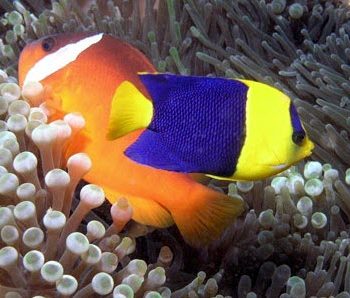Bicolor Angelfish Reef Safe
If you're an avid reef keeper and looking for a new addition to your tank, you might be wondering if bicolor angelfish are reef safe. Bicolor angelfish are a popular choice for aquarium enthusiasts but can sometimes cause trouble in a reef environment. Before you add these beautiful fish to your tank, it's important to understand their behavior and needs to ensure a peaceful coexistence with your coral and other reef inhabitants.
Pain Points
One of the biggest concerns with bicolor angelfish in a reef environment is their tendency to nip at corals. They may also eat shrimp, clams, and other invertebrates. Additionally, bicolor angelfish can be aggressive towards other fish in the tank, especially other angelfish.
Answering the Target
To safely keep bicolor angelfish in a reef tank, it's important to provide them with plenty of hiding spaces and keep them well-fed to discourage coral nipping. Additionally, it's best to introduce them to the tank last to minimize aggression towards other fish.
Summary
Bicolor angelfish can be a beautiful addition to a reef tank, but they need to be carefully managed to ensure a peaceful coexistence with other inhabitants. Providing hiding spaces, keeping them well-fed, and introducing them last to the tank can all help reduce the risk of aggression and coral nipping.
Bicolor Angelfish Reef Safe: Personal Experience
I have always been fascinated by bicolor angelfish, and I was thrilled to add one to my reef tank a few years ago. Initially, I didn't have any issues, but over time, I noticed that my angelfish was starting to nip at my corals. I quickly realized that I needed to take action to prevent any further damage to my reef. I added more hiding spaces to the tank and started feeding my angelfish more frequently to keep its attention away from the corals. While it took some time, my angelfish eventually stopped nipping at the corals, and now, it happily coexists with all my other reef inhabitants.

Managing Aggression in Bicolor Angelfish Reef Safe
If you have multiple bicolor angelfish or other angelfish in your tank, you may notice aggression towards one another. This can lead to fighting, stress, and even physical harm. To manage aggression in bicolor angelfish, provide plenty of hiding spaces, and ensure plenty of swimming room to minimize territorial disputes. Additionally, avoid keeping multiple angelfish that look similar, as this can increase aggression towards one another.

Bicolor Angelfish Diet in a Reef Tank
Bicolor angelfish are omnivores and require a varied diet to remain healthy. In a reef tank, they may graze on algae and other plant matter, but you should also supplement their diet with frozen or fresh foods such as brine shrimp, seaweed, and Mysis shrimp. Providing a well-rounded diet can help keep your bicolor angelfish healthy and less likely to nip at corals or other invertebrates.
Bicolor Angelfish Breeding in Captivity
Bicolor angelfish can be bred in captivity, but it can be tricky, especially for beginners. They require a specific diet, water conditions, and breeding pairs to spawn successfully. If you're interested in breeding bicolor angelfish, it's important to do your research and ensure you have the necessary equipment and knowledge to support their breeding requirements.
Question and Answer
Q: Are bicolor angelfish suitable for beginners?
A: Bicolor angelfish can be suitable for beginners, but they do require some experience with reef tank management and understanding their behavior to ensure a peaceful coexistence with other inhabitants.
Q: Can bicolor angelfish live in a tank with corals?
A: Yes, bicolor angelfish can live in a tank with corals, but they may nip at them if not provided with enough hiding spaces or fed properly.
Q: How big do bicolor angelfish get?
A: Bicolor angelfish can grow up to 6 inches in length, making them a medium-sized fish suitable for smaller reef tanks.
Q: What other fish can live peacefully with bicolor angelfish?
A: Bicolor angelfish can live peacefully with a variety of reef-safe fish, such as clownfish, gobies, and wrasses.
Conclusion
Bicolor angelfish can be a stunning addition to a reef tank, but it's important to understand their behavior and needs to ensure a peaceful coexistence with other inhabitants. Providing hiding spaces, keeping them well-fed, and introducing them last to the tank can all help reduce the risk of aggression and coral nipping. With proper care, bicolor angelfish can live long, healthy lives in a beautiful reef environment.
Gallery
Dwarf Angelfish - Bicolor Angelfish (Centropyge Bicolor) - AquariumCodex
Photo Credit by: bing.com / angelfish bicolor dwarf centropyge saltwater
Bicolor Angelfish - Centropyge Bicolor | Marinewise
Photo Credit by: bing.com / angelfish bicolor
Marine Life: Bicolor Angelfish
Photo Credit by: bing.com / angelfish bicolor
Bicolor Angelfish, 'Centropyge Bicolor' Photo - J Ponces Photos At
Photo Credit by: bing.com / bicolor angelfish centropyge pbase ponces jpc
Bicolor Angelfish
Photo Credit by: bing.com / bicolor fish angelfish reef centropyge fishes reference
